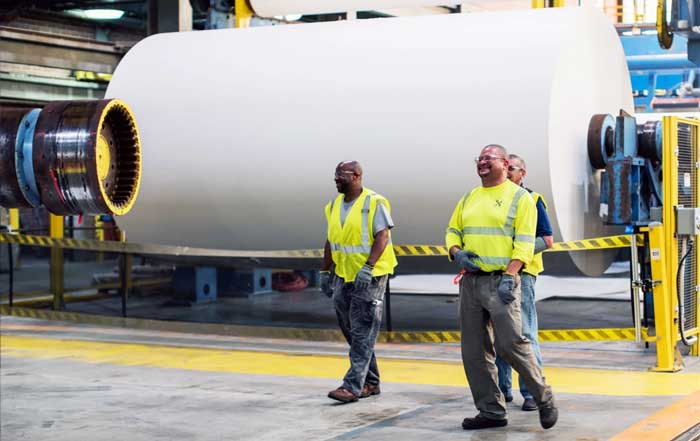Inflation in the United States has long been one of the most closely watched economic indicators, shaping the decisions of businesses, investors, and policymakers alike. As the global economy undergoes rapid transformations in 2025, ranging from supply chain shifts and energy transitions to evolving monetary policies, inflation remains a defining concern both domestically and internationally. For readers of usa-update.com, understanding where U.S. inflation stands today, how it compares to other advanced and emerging economies, and what predictions can reasonably be made about its trajectory is central to making sense of broader economic trends. This article explores inflationary dynamics in depth, weaving together analysis from leading organizations, government agencies, and financial institutions to provide a comprehensive and trustworthy perspective.
The State of U.S. Inflation in 2025
As of 2025, U.S. inflation continues to stabilize after several years of volatility. Following the pandemic-era disruptions and subsequent recovery phases, the Consumer Price Index (CPI) and the Personal Consumption Expenditures (PCE) index are trending closer to the Federal Reserve’s long-term target of 2 percent, though not without fluctuations. The sharp spikes of 2021–2022, when prices of energy, housing, and food surged at rates not seen in decades, have moderated, but structural factors such as labor shortages, global energy transitions, and housing demand keep inflation slightly elevated compared to historical averages.
The Federal Reserve has maintained a cautious stance, balancing between rate adjustments to prevent overheating and ensuring the economy does not tip into recession. Policymakers are acutely aware that while headline inflation has cooled, core inflation—particularly in services and housing—remains stubborn. Analysts at Bloomberg Economics and the International Monetary Fund (IMF) highlight that while the U.S. has achieved better stabilization than some peers, risks persist in wage-driven inflationary pressures and fiscal spending dynamics.
Readers seeking broader updates on macroeconomic indicators can refer to usa-update.com/economy.html, which regularly covers domestic and global shifts in economic performance.
Global Inflation Comparisons
Inflationary trends vary widely across regions in 2025, reflecting different structural challenges, monetary policies, and external shocks.
Europe: The eurozone has seen inflation rates gradually return toward the European Central Bank’s 2 percent target, though energy markets—particularly natural gas—remain volatile. Countries like Germany and France report more stability compared to 2022–2023, while southern economies such as Italy and Spain continue to wrestle with higher food and housing costs.
United Kingdom: The UK continues to experience above-average inflation compared to other advanced economies, largely due to persistent post-Brexit trade frictions, supply bottlenecks, and elevated import costs. The Bank of England faces significant pressure in managing inflation without triggering deeper recessions in manufacturing sectors.
Asia-Pacific: Inflation is relatively moderate in countries like Japan, South Korea, and Singapore, though China’s economy faces deflationary risks due to slowing consumer demand and structural property-sector weaknesses. In contrast, emerging economies such as India and Indonesia experience higher inflationary pressures, driven by energy imports and rapid wage growth.
South America: Countries like Brazil and Argentina still struggle with double-digit inflation, reflecting long-standing fiscal imbalances and currency volatility. Regional disparities highlight how inflation is both a domestic and global story.
Africa: Inflation trends vary widely, with South Africa contending with elevated energy costs and Nigeria grappling with food inflation linked to supply chain inefficiencies.
Global comparisons underscore how the U.S. remains relatively resilient, benefiting from its diversified economy and strong labor markets. However, inflation remains a globalized challenge shaped by trade flows, commodity markets, and monetary synchronization.
For readers interested in broader geopolitical and economic perspectives, usa-update.com/international.html offers regular updates on international developments.
Drivers of Inflation in the U.S. and Abroad
Several key factors underpin inflation dynamics across both the U.S. and global markets in 2025:
Energy Transition and Prices
Energy remains a critical driver. While oil prices have stabilized, the global shift toward renewable energy and decarbonization introduces new volatility in supply chains for critical minerals such as lithium, cobalt, and rare earths. The U.S. Inflation Reduction Act has stimulated clean energy investments, but such structural shifts create short-term pricing pressures in both utilities and manufacturing.
Labor Markets
In the U.S., tight labor markets contribute to wage inflation, particularly in healthcare, logistics, and technology sectors. Globally, demographic trends and migration policies play significant roles, with some European countries facing shrinking workforces while parts of Asia benefit from youthful labor pools.
Housing and Real Estate
Housing costs remain one of the largest contributors to U.S. inflation. Demand continues to outstrip supply, particularly in urban areas and fast-growing states like Texas and Florida. Internationally, housing dynamics differ—Japan and Germany face slower growth, while countries like Canada and Australia grapple with affordability crises driven by immigration and investment flows.
Supply Chain Shifts
The pandemic-era disruptions have not disappeared entirely. Reshoring and nearshoring strategies in North America and Europe reduce reliance on China but increase costs in the short run. Geopolitical tensions, such as those in the South China Sea or Eastern Europe, add further uncertainty to supply chain stability.
For further context on business and trade-related drivers, usa-update.com/business.html provides in-depth coverage of U.S. and international markets.
Monetary Policy and Inflation Expectations
A central theme in inflation management is how monetary authorities act and communicate. The Federal Reserve, the European Central Bank, and the Bank of England remain aligned in prioritizing inflation control, but each faces unique domestic pressures.
In the U.S., inflation expectations among households and businesses are critical. Surveys from the University of Michigan and market-based measures show that long-term expectations remain anchored, a positive sign for policymakers. However, short-term expectations remain sensitive to energy and housing costs. Central bank credibility plays a vital role in ensuring inflation does not spiral into wage-price cycles.
Global synchronization of monetary tightening since 2022 has helped reduce inflationary momentum, but uneven growth means different countries adopt tailored policies in 2025. Emerging markets face higher risks, as capital flows often respond to U.S. interest rate policy, creating additional inflationary volatility in developing economies.
Readers following central banking developments can explore usa-update.com/finance.html, which includes updates on Federal Reserve policy and related financial market implications.
Inflation and Employment Dynamics
Inflation cannot be analyzed in isolation—it directly intersects with employment. As of 2025, the U.S. labor market remains robust, with unemployment near historic lows. However, the “soft landing” debate continues: can the U.S. maintain strong employment while reducing inflation without tipping into recession?
In some industries, higher wages are essential to attract workers, particularly in healthcare and skilled trades. This contributes to cost pressures but also reflects long-term structural needs. For businesses, managing labor costs while remaining competitive in global markets is an ongoing challenge.
At a global level, countries like Germany and South Korea face demographic headwinds, while India and parts of Africa see opportunities in labor force expansion. This divergence influences inflationary pressures differently across regions.
To follow more on U.S. employment and job market updates, readers can visit usa-update.com/jobs.html and usa-update.com/employment.html.
Global Inflation Dashboard 2025
Interactive comparison of inflation rates worldwide
United States
2.4%
U.S. inflation continues to stabilize after pandemic-era disruptions, trending closer to the Federal Reserve's 2% target despite challenges in housing and services sectors.
Predictions for 2025 and Beyond
Looking ahead, inflation in the U.S. is expected to remain slightly above target through much of 2025, hovering between 2.3 and 2.7 percent according to projections from the Federal Reserve and private sector analysts. By 2026, consensus forecasts suggest inflation may fully normalize, assuming no major geopolitical or energy shocks. Risks, however, remain asymmetric—energy crises, climate events, or unexpected fiscal expansions could reignite upward pressures.
Globally, advanced economies are likely to converge toward moderate inflation rates, while emerging markets will continue to face more volatility. Currency stability, fiscal prudence, and energy independence will be critical differentiators in how countries manage their inflationary outlooks.
For broader news on evolving economic and financial scenarios, usa-update.com/news.html and usa-update.com/regulation.html provide timely coverage of key events and policy decisions.
Extended Analysis: Inflation and Sectoral Impacts in the U.S.
Housing and Real Estate Inflation
One of the most persistent components of U.S. inflation in 2025 continues to be housing. Shelter costs, which account for nearly a third of the Consumer Price Index, remain elevated. The National Association of Realtors notes that median home prices have remained high despite modest increases in housing supply. The combination of rising construction costs, zoning restrictions, and strong demand from millennials and Generation Z entering the housing market ensures that affordability remains a challenge. Even with mortgage rates stabilizing, many first-time buyers face significant barriers to entry.
Rental markets also show continued tightness. Major metropolitan areas such as New York, Los Angeles, and Miami have seen double-digit rent increases over the past three years. This sustained housing inflation feeds into overall consumer costs and remains a policy focus for both federal and state governments. Expanding affordable housing programs and incentivizing new construction are among the strategies being pursued, yet the impact will likely be long-term rather than immediate.
Readers following broader U.S. housing developments can explore usa-update.com/consumer.html, which frequently highlights how housing trends affect consumers nationwide.
Energy and Commodity Inflation
The global energy transition adds layers of complexity to inflation. On one hand, the U.S. benefits from domestic energy resources, particularly natural gas and shale oil. On the other hand, the rapid shift toward renewable energy requires large-scale investment in critical materials like lithium, cobalt, and rare earth elements. These inputs are concentrated in specific regions, often geopolitically sensitive, which introduces risks of price volatility.
For example, lithium prices spiked in early 2025 as demand for electric vehicles (EVs) soared, placing pressure on automakers and consumers. While domestic production in Nevada and California is expanding, the U.S. remains dependent on imports for certain strategic minerals. Meanwhile, global oil prices have steadied compared to the early 2020s, but geopolitical events in the Middle East or Eastern Europe still have the potential to trigger price surges that ripple across consumer goods and transport sectors.
The U.S. Department of Energy continues to emphasize resilience strategies, including stockpiling critical materials and encouraging investment in domestic mining and recycling industries. As energy remains at the heart of both economic competitiveness and consumer affordability, its role in inflationary dynamics cannot be overstated.
For updates on U.S. energy policy and its connection to prices, visit usa-update.com/energy.html.
Healthcare and Service Inflation
Service-driven inflation is another defining characteristic of the U.S. economy in 2025. Healthcare, in particular, continues to account for a significant portion of household expenses. The Centers for Medicare & Medicaid Services (CMS) projects that national health expenditures will rise steadily through the decade, influenced by aging demographics, labor shortages, and advanced technology adoption.
Hospitals and clinics face higher wage demands as they compete for skilled professionals in an industry still recovering from pandemic-era burnout. Additionally, the integration of AI-driven diagnostic tools and biotechnology innovations, while improving outcomes, has introduced new cost structures that insurers and consumers must absorb.
Beyond healthcare, other service industries such as hospitality, dining, and transportation continue to experience above-average inflation rates. Consumer demand remains strong in these sectors, particularly as Americans prioritize experiences and travel post-pandemic, but limited supply and higher labor costs keep prices elevated.
For readers tracking how inflation interacts with broader lifestyle trends, usa-update.com/lifestyle.html provides detailed coverage.
Global Inflation Case Studies
Europe: Stabilization with Structural Risks
In Europe, inflation is gradually moderating in 2025, but unevenly across member states. Germany and France are leading the stabilization trend, while Italy, Spain, and Greece experience more persistent challenges, particularly with food and housing costs. The European Central Bank (ECB) has achieved progress in anchoring expectations, but structural vulnerabilities remain.
One of the critical risks lies in energy dependence. Although the continent has diversified away from Russian gas, the cost of alternative supplies remains higher. This creates a dual challenge for European policymakers: securing energy independence while keeping inflation manageable. Rising defense spending in response to ongoing geopolitical instability in Eastern Europe also adds fiscal pressure.
European inflation trends have global spillover effects, influencing trade, investment flows, and currency dynamics with the U.S. dollar. Businesses operating transatlantically are especially attentive to exchange rates, as they affect export competitiveness and investment returns.
Asia: Divergent Paths
Asia presents a complex picture. Japan, after decades of deflationary tendencies, continues to sustain moderate inflation, largely supported by monetary stimulus and demographic policies aimed at stimulating demand. South Korea shows similar moderation, though housing and wage costs keep inflation slightly elevated.
China stands apart, experiencing deflationary risks due to slowing domestic consumption and a real estate market still under strain. The government’s attempts to stimulate growth through infrastructure spending and credit expansion have not yet resolved structural imbalances. This creates a ripple effect for global supply chains, as weaker Chinese demand reduces commodity prices but also threatens global trade volumes.
Emerging Asian economies such as India and Indonesia experience higher inflation, often tied to food and energy imports. However, their strong GDP growth and youthful demographics provide buffers that advanced economies lack. These nations will likely remain important growth drivers, even as they grapple with inflation management.
For readers interested in tracking the technology and trade dynamics shaping Asia’s role in global inflation, usa-update.com/technology.html is a valuable resource.
Latin America and Africa: Inflationary Volatility
Latin America and Africa continue to wrestle with high inflation in 2025, though experiences differ significantly by country. Brazil’s inflation, while still elevated, has improved compared to its recent past due to tighter monetary policy and reforms in fiscal management. Argentina, however, remains trapped in cycles of currency devaluation and double-digit inflation, limiting its ability to attract foreign investment.
In Africa, Nigeria faces persistent food inflation, exacerbated by logistical bottlenecks and currency pressures. South Africa contends with rising energy costs and infrastructure-related constraints, while countries such as Kenya and Ghana demonstrate more stability through targeted reforms.
These regions highlight the importance of credibility in central banking, fiscal discipline, and political stability. Without these, inflation becomes not just an economic challenge but a societal one, eroding trust and discouraging both domestic and foreign investment.
Readers following the interplay between global inflation and international development should explore usa-update.com/international.html.
Inflation, Technology, and Productivity
One of the underappreciated aspects of inflation management in 2025 is the role of technology and productivity. Automation, artificial intelligence, and digital transformation are reshaping how businesses operate. While these innovations introduce upfront costs, they also hold the potential to offset inflationary pressures by boosting efficiency.
For example, AI-driven logistics platforms are helping firms optimize supply chains, reducing waste and transportation costs. Similarly, automation in manufacturing enhances output while limiting reliance on scarce labor. Over time, these advances can help moderate inflation, though the transition period may still reflect higher costs as companies invest in technology.
Moreover, digital platforms provide consumers with greater transparency and price comparison opportunities, helping to dampen price gouging and inefficiencies. In this sense, the digital economy serves as both a driver of new inflationary pressures and a mechanism for keeping them in check.
For further analysis of technological shifts and their economic implications, readers can visit usa-update.com/technology.html.
Long-Term Inflation Predictions: 2025 to 2030
Projected U.S. Inflation Path
Between 2025 and 2030, U.S. inflation is expected to stabilize further, though structural challenges will likely keep it somewhat elevated compared to the pre-pandemic era. Most forecasts from the Federal Reserve, IMF, and private banks like Goldman Sachs suggest that inflation will hover in the 2–2.5 percent range through the late 2020s, barring major external shocks. This range reflects an equilibrium between wage growth, productivity improvements, and controlled energy prices.
However, housing affordability remains the single largest risk to inflation stability. Unless construction outpaces demand meaningfully, housing will continue to contribute disproportionately to core inflation. Policymakers are expected to introduce new incentives for construction, zoning reform, and federal housing programs, but the effectiveness of these interventions depends on execution at both federal and state levels.
Another important factor will be how technology offsets cost pressures. If automation, digital platforms, and artificial intelligence adoption expand as predicted, productivity gains could help prevent inflationary cycles even as wages rise. In this sense, the U.S. may benefit from being at the forefront of technological integration compared to many global peers.
For ongoing insights into financial projections and policymaking, visit usa-update.com/finance.html.
Global Outlook to 2030
Globally, inflation dynamics will diverge based on demographics, policy discipline, and energy strategies:
Europe: The eurozone is expected to stabilize inflation near 2 percent but will remain vulnerable to energy shocks and demographic pressures, particularly as aging populations increase fiscal burdens. Countries with strong green energy transitions, such as Germany and Denmark, may outperform peers still dependent on imported fossil fuels.
United Kingdom: Post-Brexit adjustments will continue to affect trade flows and costs. Inflation is projected to remain higher than the eurozone average, with fiscal pressures requiring difficult choices on taxation and spending.
Asia-Pacific: Japan will attempt to maintain moderate inflation levels after decades of deflation, while South Korea, Singapore, and Taiwan balance export competitiveness with domestic cost pressures. China may experience deflationary risks longer than anticipated unless consumer demand strengthens and the property market stabilizes. India, on the other hand, is expected to experience higher inflation but within manageable levels, supported by rapid economic expansion.
Emerging Markets: Latin America and Africa will remain inflation-prone, though some economies may improve with institutional reforms. Brazil, South Africa, and Nigeria stand out as nations where inflationary volatility will depend on governance and monetary credibility.
These patterns reinforce that inflation is not uniform globally but reflects each country’s political, social, and economic structures.
Climate Change and Inflationary Pressures
Weather-Related Disruptions
Climate change is becoming a more direct driver of inflation. Extreme weather events such as hurricanes, floods, and droughts increase food and energy costs. In the U.S., prolonged droughts in the Midwest affect grain production, driving food inflation domestically and globally. Similarly, hurricanes disrupt energy infrastructure in the Gulf Coast, leading to temporary spikes in gasoline and utility costs.
Internationally, countries like India and Brazil face crop volatility that influences global commodity markets. Food price shocks spread quickly, as global supply chains connect producers in the Global South with consumers worldwide. This means inflation linked to climate events can cascade across regions, often disproportionately affecting developing economies.
Transition Costs of Green Energy
While renewable energy promises long-term stability, the short-term costs of transition are inflationary. Building solar farms, wind energy grids, and electric vehicle infrastructure requires upfront capital and inputs that remain expensive in 2025. Governments that invest aggressively in green energy, such as the U.S. through the Inflation Reduction Act, must balance near-term inflationary impacts with long-term sustainability benefits.
This balancing act is critical not just for inflation but also for social stability, as higher utility costs can strain lower-income households. Subsidies, tax credits, and regulatory reforms will play key roles in smoothing the transition.
For more on how energy and environment policy intersect with economic growth, visit usa-update.com/energy.html.
Policy Options for Inflation Control
Fiscal Responsibility
Fiscal policy remains as critical as monetary policy in managing inflation. In the U.S., federal spending priorities—whether on defense, infrastructure, or social programs—must balance growth with inflation risks. Excessive deficit spending can push inflation higher, while overly restrictive policies risk stalling growth. The challenge is finding a balance that sustains confidence among both domestic consumers and international investors.
Globally, nations with stronger fiscal discipline tend to experience more stable inflation. Germany’s long-standing fiscal conservatism, for example, gives it greater resilience, while countries like Argentina and Turkey demonstrate how poor fiscal management can undermine even strong growth sectors.
Monetary Policy Innovation
Central banks are increasingly adopting new tools to manage inflation beyond traditional interest rate adjustments. In the U.S., forward guidance and balance sheet management continue to be essential. Globally, some central banks experiment with digital currencies to improve transparency and control money supply dynamics.
The rise of Central Bank Digital Currencies (CBDCs), already in pilot phases in China and the European Union, may also affect inflation management by improving the efficiency of payment systems and reducing transaction costs. However, these tools are still experimental, and their long-term inflationary implications remain uncertain.
Readers tracking regulatory innovations and fiscal shifts can stay updated through usa-update.com/regulation.html.
Inflation and Investor Strategies
Safe Havens and Equities
Investors in 2025 are adjusting strategies to hedge against inflation while capturing growth opportunities. Gold and Treasury Inflation-Protected Securities (TIPS) remain safe havens, but equities in technology, healthcare, and green energy continue to attract capital as long-term inflation-resilient sectors.
The U.S. stock market has demonstrated resilience, though volatility is higher than in previous decades. Investors remain cautious of sectors highly exposed to commodity fluctuations, such as airlines and traditional manufacturing, while focusing on industries where pricing power is strong.
Real Estate and Alternative Assets
Real estate remains a double-edged sword. While housing affordability challenges create risks for first-time buyers, institutional investors continue to view real estate as a hedge against inflation. Commercial real estate, particularly in logistics and data centers, benefits from long-term structural demand.
Additionally, alternative assets such as private equity, venture capital, and commodities attract investors seeking to diversify portfolios. The expansion of tokenized assets and blockchain-enabled platforms is also opening new opportunities for inflation-resistant investment vehicles.
For coverage of investment strategies shaped by inflation, visit usa-update.com/business.html.
Social and Political Implications of Inflation
Inflation is not only an economic metric but also a political flashpoint. In the U.S., rising costs of living directly affect public sentiment and electoral outcomes. Political debates increasingly center on whether government policies exacerbate or mitigate inflation. Presidential candidates in the 2028 election cycle will almost certainly make inflation management a cornerstone of their platforms.
Globally, high inflation has historically triggered social unrest, and the same risks apply in the mid-2020s. Protests over food and energy prices are already visible in parts of Africa and South America. Policymakers must recognize that inflation erodes not just purchasing power but also trust in governance.
For readers seeking context on inflation and its role in shaping domestic and global events, usa-update.com/events.html provides detailed insights.
Conclusion: Inflation as a Defining Issue of the Decade
As the global economy moves deeper into the second half of the decade, inflation will remain one of the most defining issues shaping growth, stability, and social outcomes. The United States stands in a comparatively strong position, with diversified industries, technological leadership, and institutional credibility. Yet, challenges in housing, labor, and energy mean inflationary pressures will not vanish entirely.
Globally, disparities in inflation reflect deeper differences in governance, energy policy, and demographics. Advanced economies may stabilize, but emerging markets remain more vulnerable. Climate change, energy transitions, and geopolitical risks add layers of uncertainty that require continuous monitoring.
For business leaders, investors, and policymakers, inflation is no longer a short-term crisis but a long-term reality requiring strategic adaptation. The years leading to 2030 will test resilience, innovation, and cooperation at both national and international levels.
Stay informed with trusted updates on these issues through usa-update.com, with focused coverage on economy, finance, international, business, jobs, and more.










